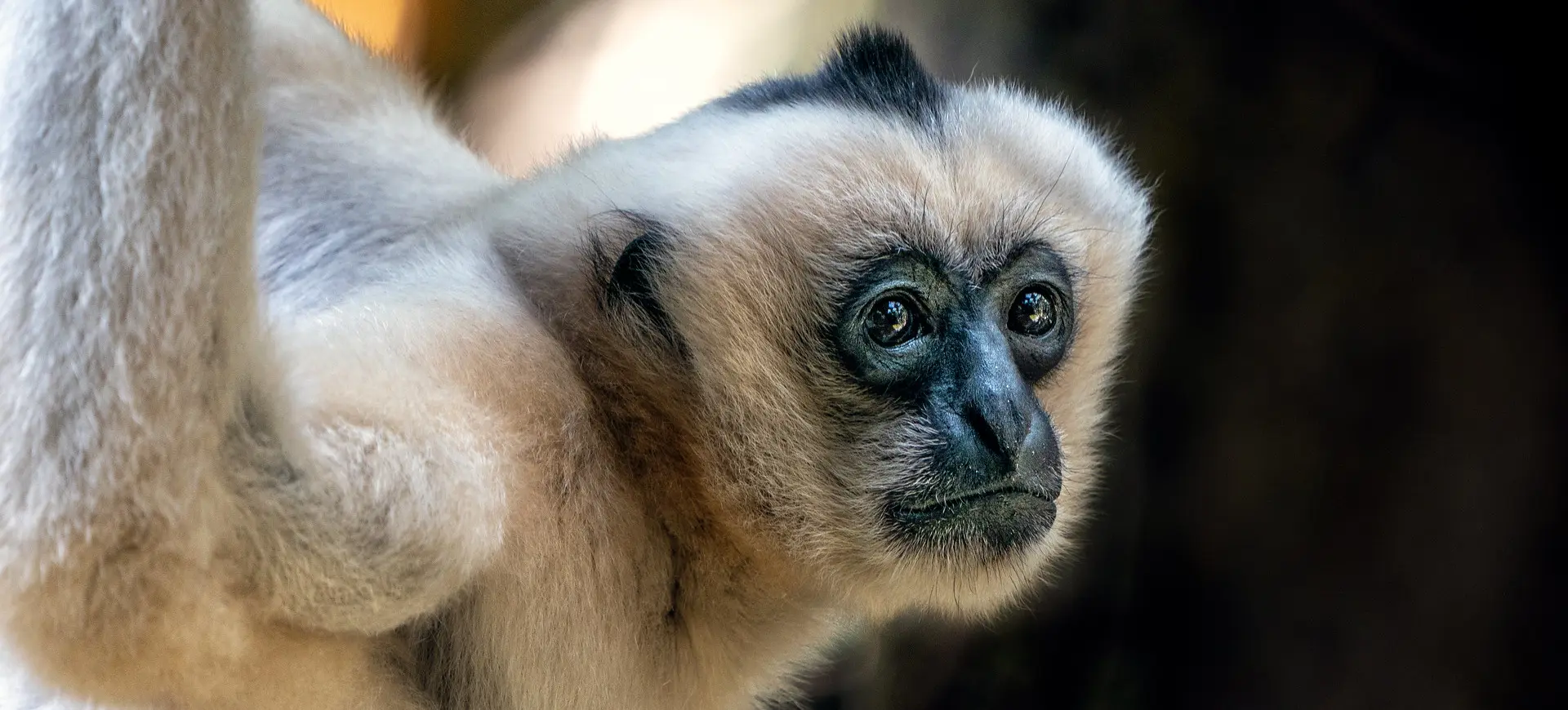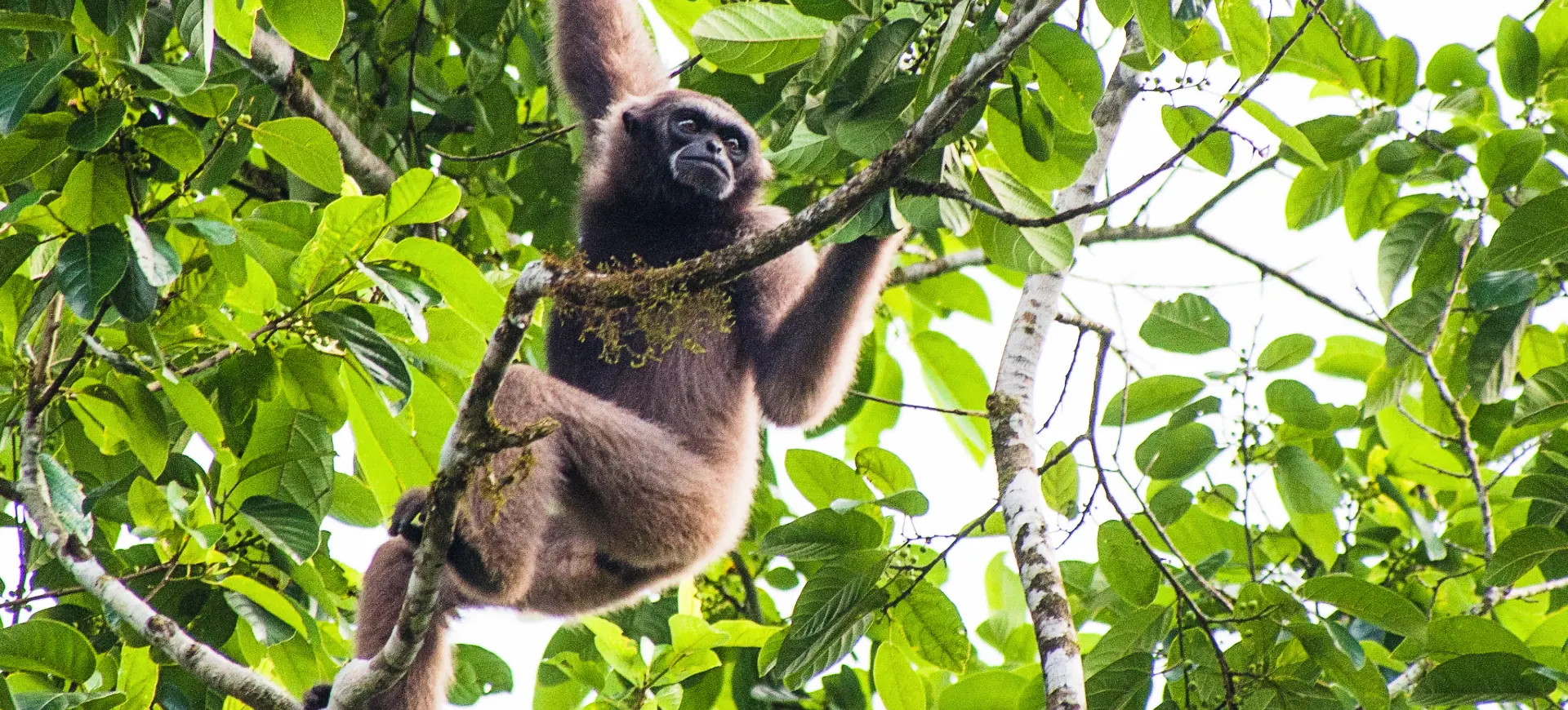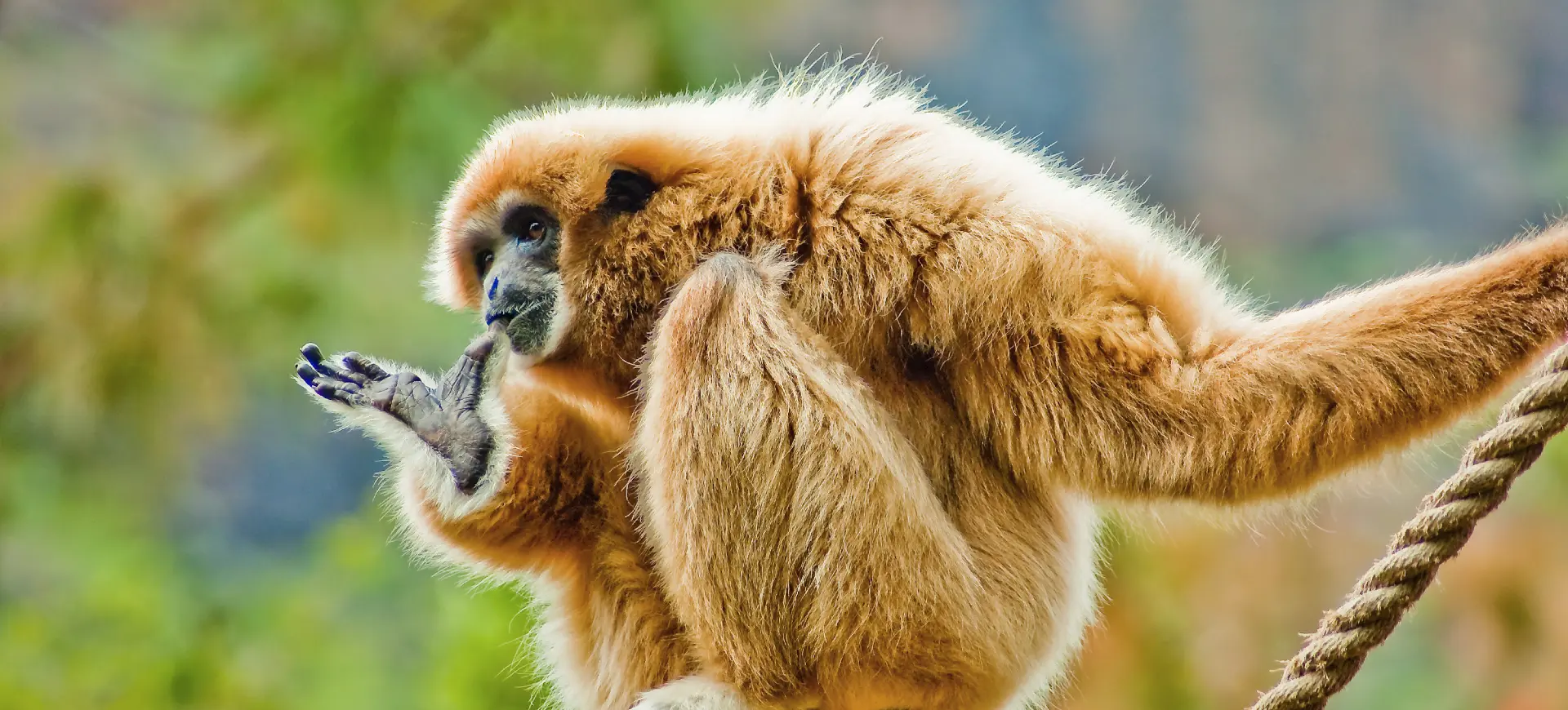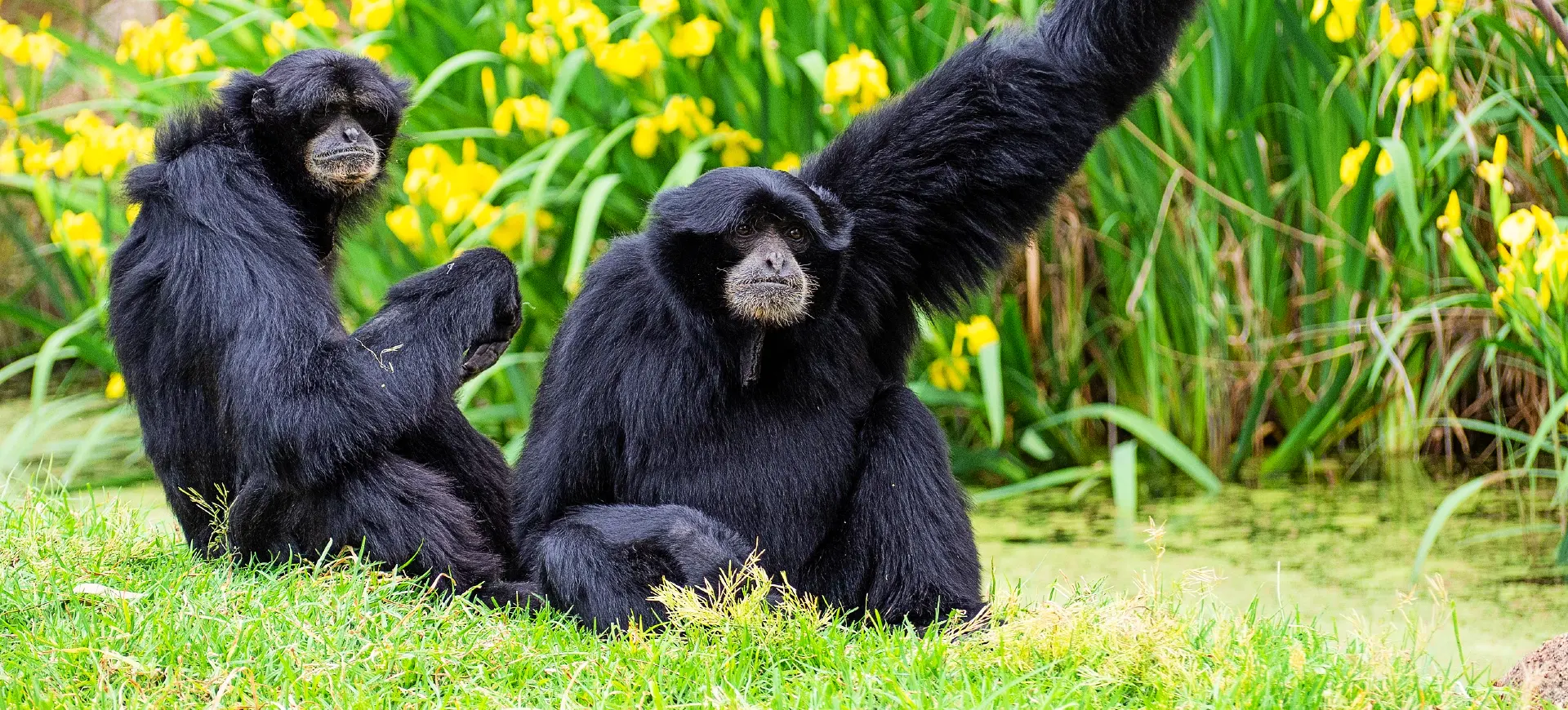Overview
The Pileated Gibbon (Hylobates pileatus) is a primate species belonging to the Hylobatidae family. This small ape is native to the tropical rainforests of Cambodia, Laos, and Thailand in Southeast Asia. Like other gibbons, they are incredibly agile, spending most of their lives in the treetops, and are known for their distinctive call and ability to move through the trees with great speed and agility.
Pileated gibbons are sexually dimorphic, meaning males and females differ in appearance. Males are black with white hands and feet, while females are grayish with a black chest and a white or grayish-brown abdomen. Their name comes from the distinctive crest of hair on their heads, which resembles a pileus or peaked cap.
They live in small family groups consisting of a monogamous pair and their offspring. They are diurnal, active daily, and feed on fruits, leaves, and insects. However, the species is classified as Endangered by the IUCN due to habitat loss from deforestation and hunting.
Taxonomy
Kingdom
Phylum
Class
Order
Family
Genus
Species
Type
Physical Description:
The Pileated Gibbon is a small, agile primate with long arms and no tail, a feature common to all apes. They are known for their sexual dimorphism. Males have entirely black fur with contrasting white or greyish hands and feet, while females have a dual-tone coat with grey or grey-brown fur covering most of their body and a dark black chest and cap of hair on the head.
The Pileated Gibbon’s most distinctive physical feature is its ‘pileated’ or capped head, from which it gets its name. This cap or crest of hair stands upright, adding a unique character to their appearance. Their faces are expressive, with dark, round eyes that contrast sharply against their light facial skin.

Lifespan: Wild: ~30 years || Captivity: ~50 years

Weight: Male: 12 lbs (5.4 kg) || Female: 12 lbs (5.4 kg)

Length: Male: 18-20 in (45-51 cm) || Female: 17-19 in (43-48 cm)

Height: Male: 18-20 in (45-51 cm) || Female: 17-19 in (43-48 cm)

Top Speed: 34 mph (55 km/h)
Characteristic:
Native Habitat:
The Pileated Gibbon is an iconic resident of the tropical rainforests of Southeast Asia. Primarily distributed across Cambodia, Laos, and Thailand, these gibbons thrive in the rich biodiversity of these dense, undisturbed rainforests. The multi-tiered forest structure provides an excellent environment for these gibbons, with abundant food resources and the necessary vertical space for their arboreal lifestyle. The rainforest canopy offers them a safe habitat, far from ground-dwelling predators and full of fruits, their primary food source.
Pileated Gibbons are highly arboreal, meaning they spend most of their lives in the safety and abundance of the tree canopy, coming down to the forest floor infrequently. This arboreal adaptation has shaped their physical characteristics and behavior; they have long, strong arms and a light body, perfect for swinging from branch to branch in the form of locomotion called brachiation. This high-flying lifestyle enables them to cover large distances for food and mates without touching the ground. It also helps them avoid many dangers on the forest floor, making the treetops their home and refuge. The loss of these rainforests, therefore, directly threatens the survival of the Pileated Gibbon.
Climate Zones:
Biomes:
WWF Biomes:
Biogeographical Realms:
Continents:
Diet:
Diet & Feeding Habits:
Pileated Gibbons are predominantly frugivorous, with fruits making up a large portion of their diet. They especially favor ripe fruits, which provide them with needed energy. However, their diet varies, including leaves, flowers, insects, and small vertebrates.
Mating Behavior:
Mating Description:
Pileated Gibbons are monogamous, with pairs staying together for life. The breeding season is not strictly defined, and females can give birth at any time of the year. Mating involves complex courtship behaviors, including vocal duets and grooming.
Females give birth to a single infant every two to three years following a seven-month gestation period. The infant is initially cared for by the mother, but as it grows, the father and siblings will take part in its upbringing, which is a unique characteristic of gibbons.
Reproduction Season:
Birth Type:
Pregnancy Duration:
Female Name:
Male Name:
Baby Name:
Social Structure Description:
Pileated Gibbons live in monogamous family groups consisting of a mated pair and their offspring. The family unit maintains a territory in which they defend against intruders. Their complex vocalizations play a significant role in maintaining group social bonds and territorial defense.
Groups:
Conservation Status:
Population Trend:
The exact wild population of Pileated Gibbons is unknown, but it’s considered to be declining due to habitat loss and hunting. They are present in several protected areas, but the population sizes in these locations are unknown. In captivity, they are part of various conservation and breeding programs worldwide, though the exact number is not well-documented.
Population Threats:
Habitat loss due to logging and agricultural expansion is Pileated Gibbons’ most significant threat. They also face pressure from hunting for the pet trade, and in some areas, they are hunted for their meat. The fragmented nature of their remaining habitat can lead to inbreeding and reduce population viability.
Conservation Efforts:
Conservation efforts for Pileated Gibbons include habitat protection, strengthening anti-poaching laws, and maintaining genetic diversity through captive breeding programs. Increasing the connectivity between forest fragments and raising awareness about the species’ plight is also important for conservation.
Additional Resources:
Fun Facts
- Pileated Gibbons are known for their loud and melodious duets, which can echo throughout the forest.
- They are one of the few monogamous primates.
- Unlike many other primates, Pileated Gibbons doesn’t have a tail.
- They can swing through the trees at high speeds, a form of movement known as brachiation.
- Pileated Gibbons can live up to 50 years in captivity, significantly longer than their typical lifespan in the wild.
- Despite being small, they play an important role in their ecosystem, including seed dispersal.
- They are named after the distinctive crest of hair on their heads, resembling a pileus or peaked cap.
- Their long arms, used for brachiation, can be up to 2.5 times their body length.
- They start their day by vocalizing together as a family, often called a “morning song.”
- The sexual dimorphism in Pileated Gibbons makes it easy to distinguish between males and females based on their fur color.







